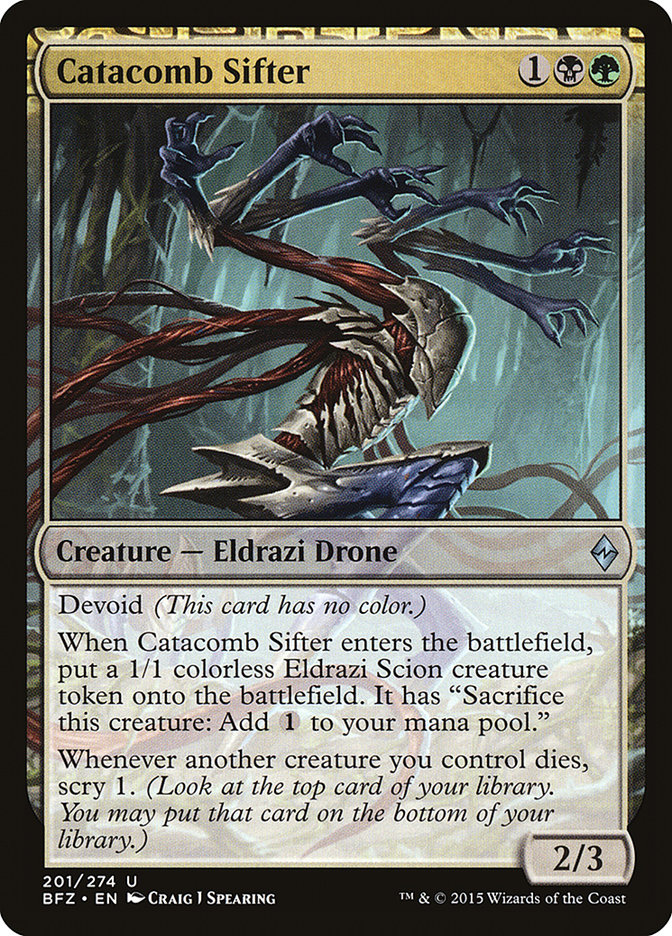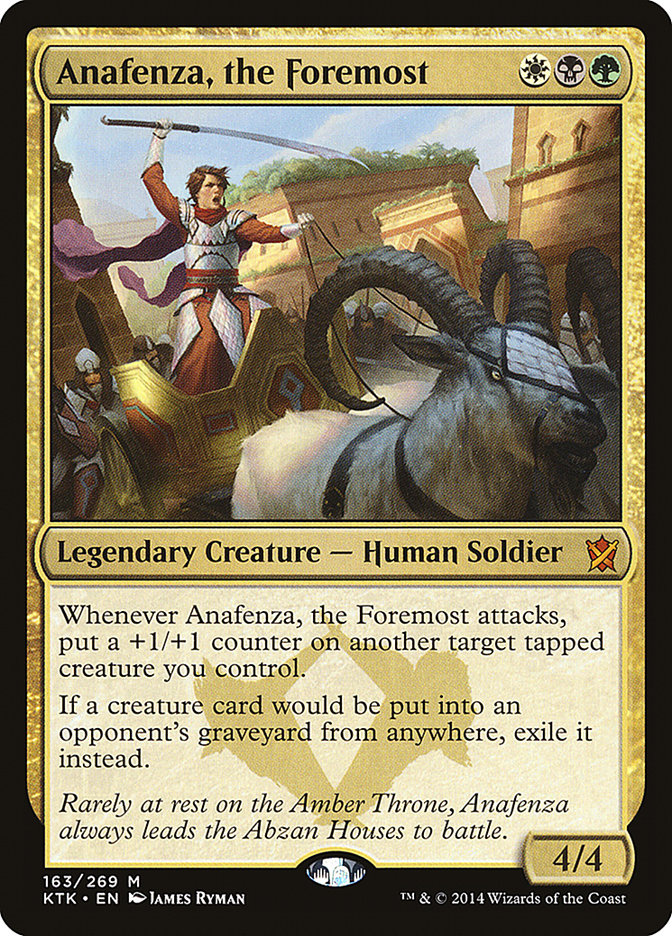I missed playing tournament Magic.
Before #SCGCIN last weekend, #GPPITT was the last large event I attended, so it felt good to shake off the rust after the holiday season.
You can probably guess what my weapon of choice was for the Modern Open.
Ultimately, I ended up losing in round 9 to not make the cut for day 2 competition, but my deck actually felt great. The only major changes in my list were getting further away from the Surgical Extractions I spoke about in my last article and instead embracing Bitterblossom.
Bitterblossom overperformed and was a pivotal card in several of my match wins against a multitude of different strategies: notably Jund, Abzan, and Splinter Twin.
This tournament was really strange for me though. Modern is home to a variety of different decks, but I think it’s fair to say that I played against the world.
In round 4, you may have witnessed poetic justice as I was trounced by Mono-Black Eldrazi on camera. I don’t think I’ve felt so helpless in a matchup since jamming my Elves into my brother’s Astral Slide deck many years ago.
Clearly I have a great deal of interest in the Eldrazi deck and it would appear that the world does too. Unfortunately, if Modern Eldrazi were to pick up substantial numbers after the release of Oath of the Gatewatch, I believe I would have to shelve Grixis Control. It simply looks that bad.
Round 8 offered another interesting series of events.
My opponent won the die roll and cracked a fetchland for a Stomping Ground to play a Birds of Paradise on the first turn. After bolting the Bird, my opponent simply played a tapped Hallowed Fountain and passed the turn.
I found this rather peculiar, and after considering my options I decided to lead with an Inquisition of Kozilek rather than spending all of my mana that turn on a Jace, Vryn’s Prodigy. I thought that the strange land sequence could signify a Geist of Saint Traft, which could very easily beat me. Instead I was greeted by the following:
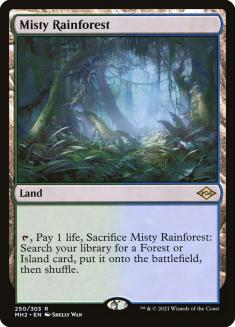
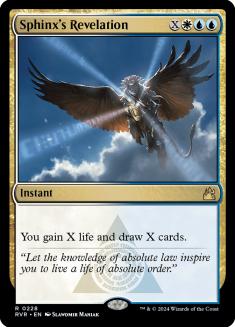
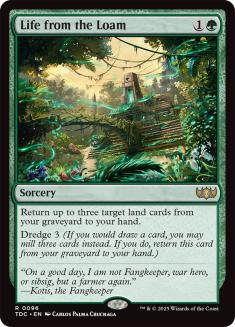
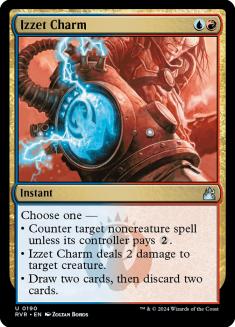
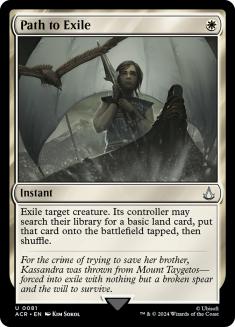
What?
My opponent, Scott Kirkwood, did a deck tech which you can view here for his Jeskai Ascendancy Gifts deck.
If I could go back and time and replay the first game of the match, I think I would be able to win it. As it were, a lack of knowledge of what my opponent was up to led to a huge tactical error on my part in the mid-game and Scott killed me at two life. Hats off to him for an innovative deck that I’m sure gave him an edge against a variety of unsuspecting opponents.
In game 3 of round 9, I fell to my Tron opponent after I kept a sketchy one-lander, basically drew running perfects, and still easily died to his turn 3 Karn.
Good beats.
That evening over dinner I was able to successfully convince Ross Merriam to play Jeskai Black with Demonic Pact in the Standard Classic on Sunday (He got 11th). When my connection on a Legacy deck fell through, that left me with Gerry T’s lovely Japanese Rally deck. Here’s what I won the Standard Classic with:
Creatures (27)
- 4 Nantuko Husk
- 4 Elvish Visionary
- 3 Grim Haruspex
- 4 Sidisi's Faithful
- 4 Jace, Vryn's Prodigy
- 4 Catacomb Sifter
- 4 Zulaport Cutthroat
Lands (24)
Spells (9)
Sideboard

I’ve had some experience playing with various Rally decks over the course of the previous Standard season, but had yet to sleeve up this format’s iteration due to my love affair with Painful Truths after the Pro Tour.
The deck is immensely powerful, and it comes as no surprise that I’ve had such a struggle beating it with a variety of different strategies after playing with it.
I certainly don’t claim to be an expert on the deck, but here are some of my observations.
Gotta Go Fast
Before even discussing actual strategy, it’s worth noting that Rally is extremely slow. Perhaps not in the sense of the raw turn count necessary to finish the game as with something like Jeskai Black, which just has very few win conditions, but in terms of its operations. This Standard format is already notably glacial due to the extremely high amount of shuffling from the fetchlands. Rally has fifteen lands that shuffle the deck, nineteen creatures that perform triggers, and Rally the Ancestors itself is often a huge headache in terms of resolving it.
Shortcutting is absolutely necessary to finish matches. I would consider myself about average in terms of speed of play, and I was knocking on the door of time nearly every round.
I made it a point to always immediately fetch my lands. If I ever cared about the land that I was fetching while my opponent was taking their turn, I simply told them I was shortcutting, took my land from my deck, and set it on the battlefield face down before their end step.
If I was leading a fetchland into a creature with a trigger, I would crack my land, place my creature on the table, and say something to the effect of “I’m getting a Forest, and after the trigger of Catacomb Sifter it is your turn.” While these actions may sound trivial, saving ten seconds while fumbling to get a token adds up a lot when your deck does this nearly every single turn of the game.
It’s also helpful to establish shortcuts when resolving multiple iterations of several triggers repeatedly. For instance, with Grim Haruspex, Catacomb Sifter, and Zulaport Cutthroat on the battlefield, I’m probably interested in resolving my scry before I draw my card. Once I had demonstrated I knew how to stack my triggers, (in this case Haruspex’s draw trigger would need to be placed on the stack first so that Catacomb Sifter’s trigger resolves on top of it), I would just quickly recite the loop: “Drain, scry, then draw.”
Now, about playing the deck. To paraphrase Ross Merriam’s observation:
“The deck is just a token control deck with a bunch of bad creatures.”
As I got further into the rounds of Sunday, I was looking at Four-Color Rally as more of a Collected Company deck than a Rally the Ancestors deck. Don’t get me wrong, Rally the Ancestors is what gives the deck ultimate inevitably, but for the most part Rally can frequently play out as a value-oriented creature deck that goes wide and has a ton of selection and built-in card advantage.
Collected Company is what I would consider the best card in the deck, and it often times feels incredibly difficult to lose if Company can be played on the fourth turn, particularly when it presents an instant-speed Jace, Vryn’s Prodigy in the same vein as Ojutai’s Command.
Four-Color Rally quickly gums up the ground, but it is a sum of its parts. If faced with a bevy of quick aggression, it can be difficult to survive long enough to build up enough pieces to present a potent engine. For this reason, cards like Elvish Visionary and Catacomb Sifter are phenomenal and demand a priority in opening hands. The former for its velocity and expendability, the latter for the fact that it creates two bodies with serviceable stats for handling early creatures while also accelerating you into double-spell turns and providing selection.
Really, Catacomb Sifter just does everything, and I’m inclined to more or less keep any hand that contains it that can cast it.
While it may be tempting to prioritize chump-blocking and doing everything in your power to buy time for the Rally the Ancestors “pay off,” I don’t think that’s a great philosophy for looking at Four-Color Rally. As I mentioned before, as a “token” deck, Rally actually has a lot of ability to race opponents, especially when Zulaport Cutthroat is involved.
It is often rather difficult for aggressive decks to effectively block Catacomb Sifters and Nantuko Husks while the rest of your squad is capable of holding the ground. Against control decks, Rally’s ability to produce so many small creatures that all have “die” triggers makes it difficult for them to pull ahead simply through the use traditional spot removal. Particularly when Rally can often spell the end of the game.
Further, there is also a lot of value for waiting as long as possible to begin cashing in your creatures, whether that be soaking up damage or getting aggressive with Nantuko Husk. Between the aforementioned, Grim Haruspex, Zulaport Cutthroat, and even Sidisi’s Faithful, there is a lot of incidental value to be accrued by keeping as many bodies on the battlefield as possible. As a result, Four-Color Rally rewards patience in establishing your board position and expending your creatures in key spots.
Jace, Vryn’s Prodigy is special in Rally. The deck contains a large number of three-drop creatures, which will often make your hands clunky. Jace’s loot ability is incredibly useful for sifting through these creatures while also filling up your graveyard for Rally the Ancestors and slowing your opponent down.
What Jace will be doing most of the time is allowing you to cast additional copies of Collected Company and for the most part, I think it is imperative to use opportunities to do so whenever they present themselves. Jace is not a crucial element for Rally to keep around like Jeskai Black, and you will often be given additional copies to flip whenever you do cast Rally, so Jace’s death is less of a liability.
Jace is especially impressive in post-board scenarios when boarding in additional copies Murderous Cut. Which leads into my next point: Playing against Anafenza, the Foremost.
Anafenza
Anafenza is bizarre in that it is the natural bane of Rally, yet as I spent some time discussing, I don’t really view Rally as the “all-in” combo deck that one might naturally assume. While an Anafenza on the battlefield is certainly a huge problem, there are several ways to address her. Sidisi’s Faithful is the major weapon for doing so in the first game. The important thing to remember, however, about the bounce creature is that simply using the Faithful’s ability for tempo is not likely to be a winning strategy. It is incredibly important that Sidisi’s Faithful is kept in reserve for the turn in which you really want to utilize some die triggers, whether that be to draw a bunch of cards or actually execute a lethal Rally.
That being said, Sidisi’s Faithful can be used to create a turn where you are able to extract a ton of value, get all of your creatures in the graveyard – including the Sidisi’s Faithful–so that you can Rally the following turn and bounce Anafenza again before going off.
While there are certainly workarounds and Anafenza isn’t nearly as deadly as it was to Rally last Standard season, it is still fairly problematic, and I would prefer another “hard” answer to it. For this reason, I think I would cut a Faithful for a second copy of Murderous Cut in the maindeck were I to play the deck again. I actively wanted to draw my single copy of Murderous Cut in every single game 1 due to how much more powerful it makes your Jace, Vryn’s Prodigy.
One last note about Anafenza, the Foremost: Due to the way her ability is worded, Eldrazi Scion tokens from Catacomb Sifter will still trigger appropriate die triggers. Anafenza only creates a replacement effect for creature cards, not creatures.
In terms of sequencing your lands, it is important to remember that white isn’t necessary for casting any spells except Rally the Ancestors. While you do eventually need WW, it won’t be an early priority. This means that Sunken Hollow is the best Battle Land in your deck, Forest is the best basic in your deck, and Plains is the worst land in your deck. From that baseline it is fairly elementary to navigate fetching your lands.
Sideboarding
This was 100% the most “fast and loose” aspect of the tournament for me. It is very difficult to sideboard with Rally due to the fact that your spells are so limited and powerful while your creatures all perform different functions.
It is also generally much better for you to find a single copy of two different engine creatures than draw multiples. For this reason, I generally used the philosophy of shaving copies of Sidisi’s Faithful and Elvish Visionary first.
The most common sideboarding involves bringing in multiple copies of Murderous Cut and Fleshbag Marauder, making the Unsummon creature less important. From there, I was more inclined to cut a copy of Nantuko Husk and Grim Haruspex over the rest of the squad due to how awkward they can be against aggressive strategies if you can’t buy a sufficient amount of time. When boarding in Fleshbag, I also didn’t want my curve to creep too high.
Perhaps the most important thing to keep in mind, however, is that it is simply important to not over sideboard. Four-Color Rally is an engine deck that is, again, a sum of its parts. Cutting into too many of its elements will make the deck less powerful as a whole.
I do think it’s worth discussing specifically my sideboarding strategies for the finals of the tournament: a Rally mirror. I’m still not clear on what the best approach for the matchup is, but it felt heavily predicated on early tempo and aggression rather than trying to “out-combo” one another. For this reason, I actually boarded out two copies of Rally the Ancestors – I only shaved a copy in one other matchup throughout the tournament and went heavy on aggressive elements like Murderous Cut, Anafenza, the Foremost, and Dispel.
This approach, alongside a great draw, panned out in the third game where I was able to get firmly ahead on the battlefield with a flipped Jace, Anafenza, multiple castings of Murderous Cut, and a Sidisi’s Faithful to eradicate my opponent’s position.
This was an exhausting tournament. It’s hard to say whether that is ultimately a result of Brad Nelson’s snoring, the eight-hour drive home back afterwards, or actually playing Rally the Ancestors, but I was wiped out.
Regardless, Four-Color Rally is very much on my radar moving forward in Standard even though my heart will always belong to Painful Truths and Soulfire Grand Master. It is an incredibly powerful and resilient deck that is worth playing and practicing for every active Standard player.

